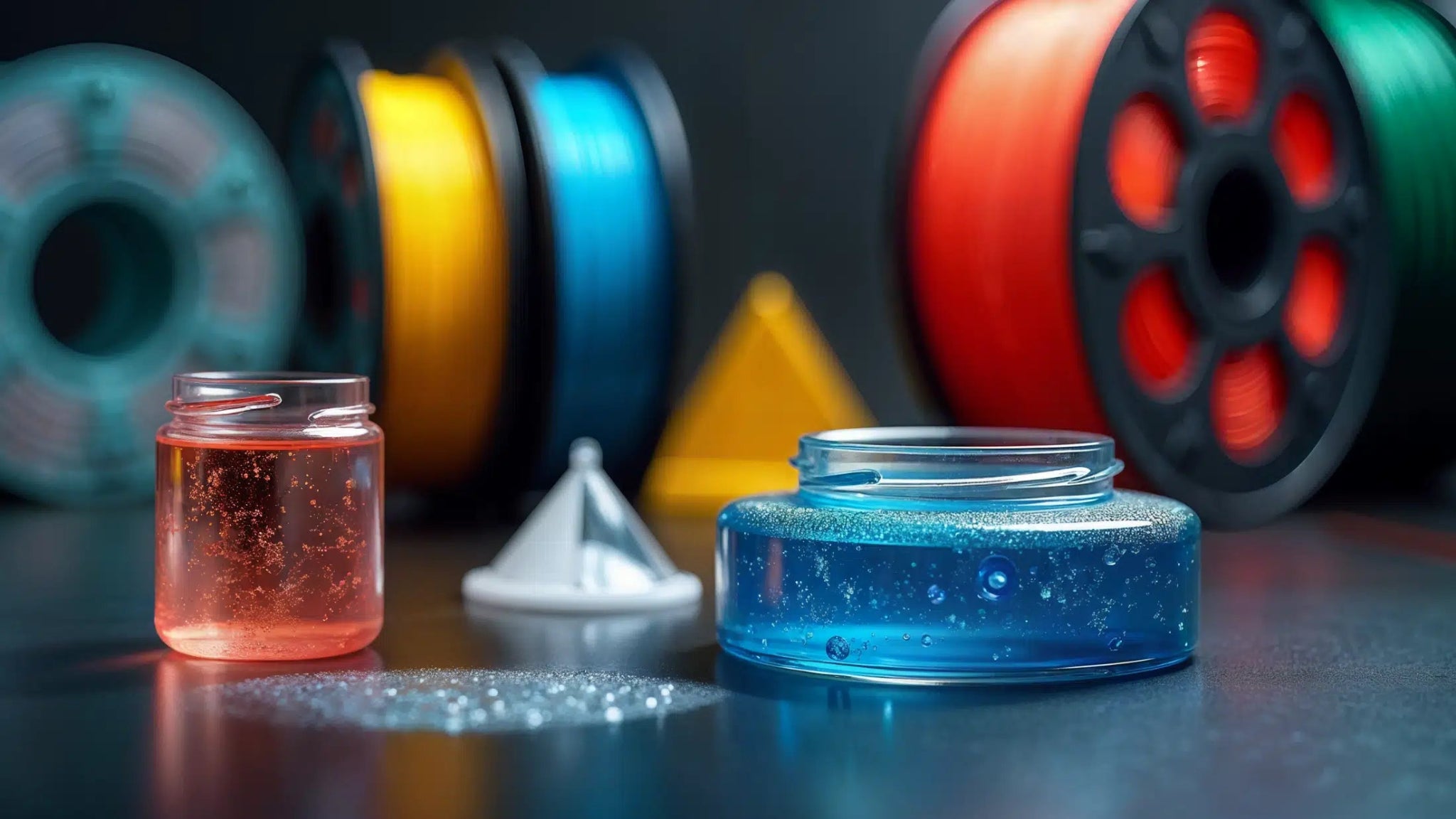3D Printing Materials: How to Choose the Right Filament or Resin for Your Project
3D printing has revolutionized the manufacturing industry, opening up countless opportunities for innovation and product development. Whether you're working on rapid prototyping, functional end-use parts, or intricate geometries, selecting the right material is crucial for success. There’s a wide range of filaments and resins available, each with different mechanical properties, surface finishes, and temperature resistance. This guide will help you understand how to choose the best material for your project.
1. Understanding the Difference Between FDM Filament and SLA Resin
3D printing materials are generally divided into two main categories: filament for FDM printers and resin for SLA/DLP printers.
-
Filament (FDM) uses an extruder to melt and deposit plastic layer by layer. It’s a robust technology ideal for strong, functional parts.
-
Resin (SLA/DLP) uses UV light to cure liquid material layer by layer, producing extremely precise and detailed models with smooth surfaces.
Choosing between these depends on your need for strength, precision, and intended application.
2. FDM Filaments: Material Types, Benefits, and Applications
PLA (Polylactic Acid)
Properties:
-
Biodegradable and eco-friendly
-
Low printing temperature
-
Easy to work with; compatible with most FDM printers
Advantages:
-
No heated bed required
-
Good print detail with minimal warping
-
Wide color range
Disadvantages:
-
Low heat resistance (~60°C)
-
Brittle and not impact-resistant
Best for:
-
Prototypes and visual models
-
Decorative elements
-
Educational use
PETG (Polyethylene Terephthalate Glycol)
Properties:
-
Strong and flexible
-
Resistant to moisture and chemicals
-
More durable than PLA
Advantages:
-
Suitable for outdoor use
-
High strength with slight flexibility
-
Less warping than ABS
Disadvantages:
-
Slightly less detail than PLA
-
Can be sticky during printing and may require cooling adjustments
Best for:
-
Electronic enclosures
-
Food-safe containers
-
Outdoor components
ABS (Acrylonitrile Butadiene Styrene)
Properties:
-
High heat resistance (~100°C)
-
Impact-resistant and robust
-
Can be smoothed with acetone vapor
Advantages:
-
Durable for mechanical use
-
Chemical-resistant
Disadvantages:
-
Requires heated bed
-
Prone to warping and emits fumes during printing
Best for:
-
Industrial components
-
Mechanical parts
-
Automotive and electronics
TPU (Thermoplastic Polyurethane)
Properties:
-
Flexible and elastic
-
Strong and wear-resistant
-
Resistant to oil and chemicals
Advantages:
-
Great for shock-absorbing applications
-
Durable and flexible
Disadvantages:
-
More difficult to print than rigid materials
-
Requires slower speeds and a flexible extruder
Best for:
-
Rubber-like parts
-
Gaskets, dampers, and flexible hinges
3. SLA Resins: Types and Applications
Standard Resin
Advantages:
-
Very high detail and accuracy
-
Smooth surfaces
-
Fast curing
Disadvantages:
-
Low mechanical strength
-
Brittle without post-curing
Best for:
-
Visual models
-
Miniatures and sculptures
-
High-detail prototypes
Tough Resin
Advantages:
-
High impact resistance
-
Less brittle than standard resin
-
Better durability under mechanical load
Disadvantages:
-
Higher material cost
-
Requires post-curing for optimal strength
Best for:
-
Functional prototypes
-
Industrial components
-
High-strength spare parts
High-Temperature Resin
Advantages:
-
Withstands temperatures above 200°C
-
Maintains structure under heat stress
Disadvantages:
-
Less flexible
-
More expensive
Best for:
-
Electronic components
-
Molds
-
Industrial parts exposed to high temperatures
4. How to Choose the Right 3D Printing Material
Consider the following factors:
-
Application: Does it need to be strong, flexible, or visually detailed?
-
Durability: Must it withstand heat, chemicals, or mechanical stress?
-
Printability: Is it easy to work with?
-
Post-processing: Will it be painted, sanded, or UV-cured?
-
Cost: What’s your budget?

5. Conclusion
There’s a wide variety of 3D printing materials, each with its own unique properties. If you need a simple material for fast prototyping, PLA is a great choice. For functional parts, PETG, ABS, or Nylon are strong candidates. For resin printing, choose between standard, tough, or high-temperature resins depending on your specific needs.
The right material depends on your project’s requirements for strength, flexibility, surface quality, and post-processing. Matching the material properties to the intended application ensures optimal results.
Need expert guidance? Contact Maker Factory today!



Share:
3D Printing Technologies: Which Method Is Best for Your Project?
3D Printing and Sustainability: Are Biodegradable Materials the Future?